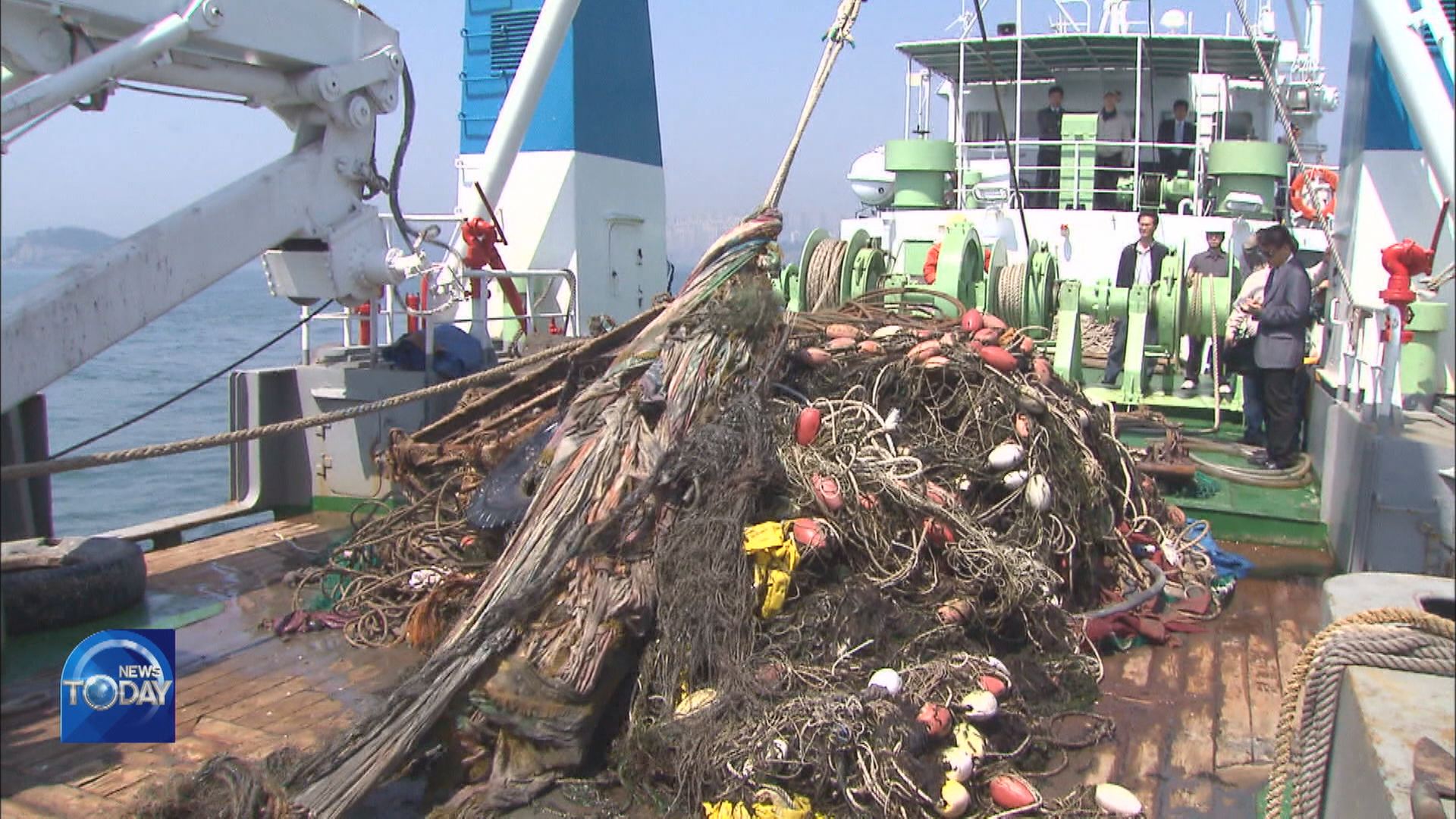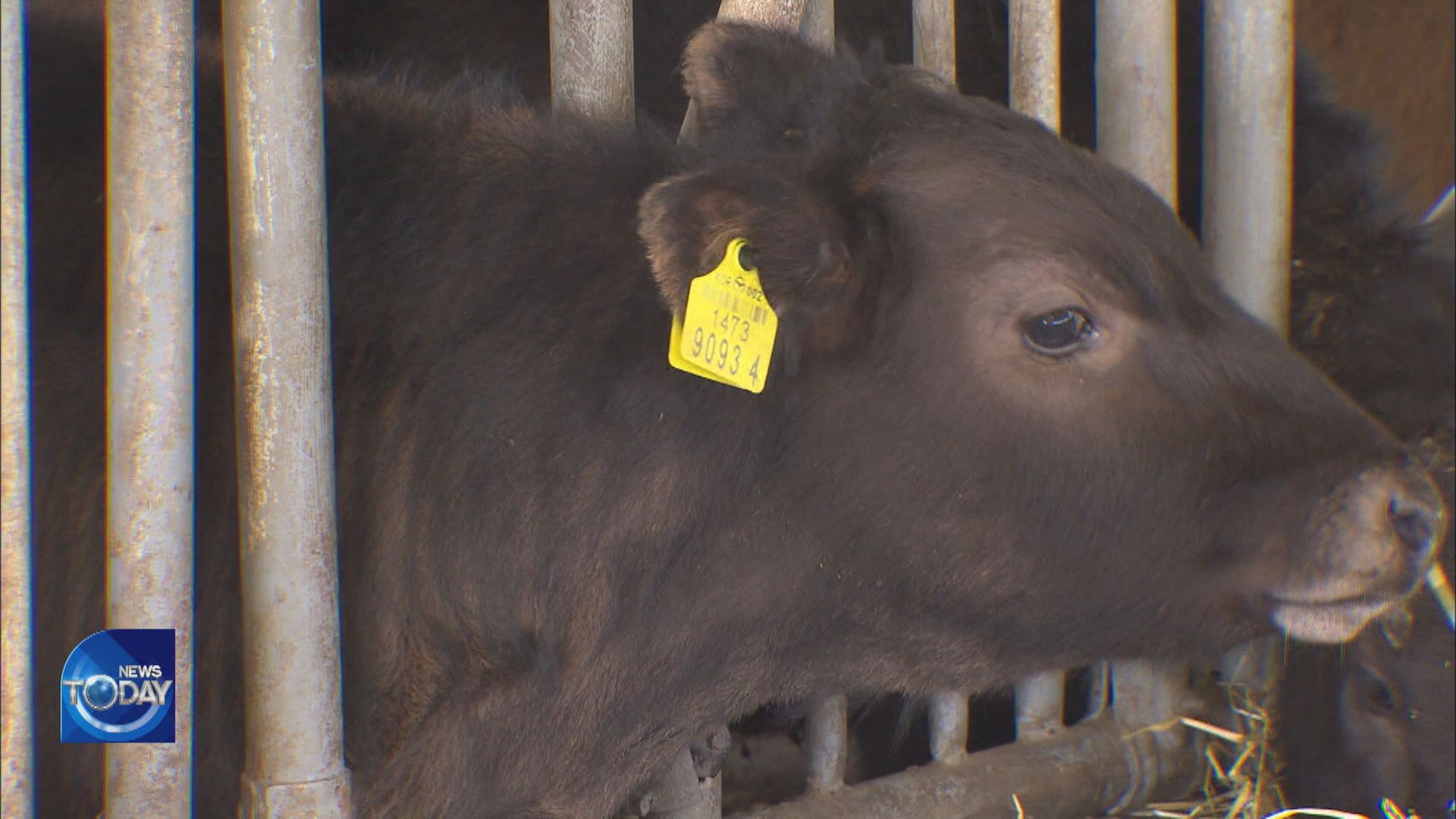TECHNOLOGY TO RECYCLE PLASTIC INTO NYLON
입력 2021.02.15 (14:56)
수정 2021.02.15 (16:46)
읽어주기 기능은 크롬기반의
브라우저에서만 사용하실 수 있습니다.
[Anchor Lead]
More than 140,000 tons of plastic waste are estimated to pollute the seas each year. To help solve this issue, Korea is attempting to recycle the harmful plastic into useful materials such as nylon or aggregate.
[Pkg]
From fishing nets to fish traps. It is estimated that more than 140,000 tons of garbage pollute the seas around Korea every year.
[Soundbite] Joo Hae-gun(Trawlnet Fisherman) : "The seas are ruined by waste. It can’t be seen from land but when we go out to sea, we can see that waters on all three sides are rotting."
Annually, 44,000 tons of used fishing nets are thrown away in the sea to cause 300 million fish to get trapped in the nets and die. Now Korea has developed a way to produce nylon from these fishing nets. Salinity and impurities are washed away from the nets to produce only pure nylon. A patent has been applied for this technology and mass production has already begun.
[Soundbite] Jeong Taek-su(Plastic Waste Recycler) : "We are planning to build a factory that recycles fishing nets. Once the factory is built, we will collect used fishing nets and recycle them into nylon."
Buoys, plastic bottles, fishing nets and other sea waste are frozen at extremely low temperatures before undergoing a powderization process. The waste materials are frozen with the leftover heat produced when liquified natural gas or hydrogen vessels are propelled. Then the frozen waste is pulverized into powder. Waste is reduced to one-tenth of its original volume.
[Soundbite] Lee Je-myeong(Director, Hydrogen Ship Technology Center) : "Once the pulverization facility is equipped on an existing eco-friendly vessel, we can efficiently collect recyclable waste."
It appears that investing 4 billion won in annual ship operation would result in processing sea waste amounting to 18 billion won. The nylon can be used for diverse materials, such as the aggregate that goes into concrete. It takes 80 billion won per year to process sea waste. Keen attention is now being paid to this eco-friendly recycling technology that turns waste into useful resources.
More than 140,000 tons of plastic waste are estimated to pollute the seas each year. To help solve this issue, Korea is attempting to recycle the harmful plastic into useful materials such as nylon or aggregate.
[Pkg]
From fishing nets to fish traps. It is estimated that more than 140,000 tons of garbage pollute the seas around Korea every year.
[Soundbite] Joo Hae-gun(Trawlnet Fisherman) : "The seas are ruined by waste. It can’t be seen from land but when we go out to sea, we can see that waters on all three sides are rotting."
Annually, 44,000 tons of used fishing nets are thrown away in the sea to cause 300 million fish to get trapped in the nets and die. Now Korea has developed a way to produce nylon from these fishing nets. Salinity and impurities are washed away from the nets to produce only pure nylon. A patent has been applied for this technology and mass production has already begun.
[Soundbite] Jeong Taek-su(Plastic Waste Recycler) : "We are planning to build a factory that recycles fishing nets. Once the factory is built, we will collect used fishing nets and recycle them into nylon."
Buoys, plastic bottles, fishing nets and other sea waste are frozen at extremely low temperatures before undergoing a powderization process. The waste materials are frozen with the leftover heat produced when liquified natural gas or hydrogen vessels are propelled. Then the frozen waste is pulverized into powder. Waste is reduced to one-tenth of its original volume.
[Soundbite] Lee Je-myeong(Director, Hydrogen Ship Technology Center) : "Once the pulverization facility is equipped on an existing eco-friendly vessel, we can efficiently collect recyclable waste."
It appears that investing 4 billion won in annual ship operation would result in processing sea waste amounting to 18 billion won. The nylon can be used for diverse materials, such as the aggregate that goes into concrete. It takes 80 billion won per year to process sea waste. Keen attention is now being paid to this eco-friendly recycling technology that turns waste into useful resources.
■ 제보하기
▷ 카카오톡 : 'KBS제보' 검색, 채널 추가
▷ 전화 : 02-781-1234, 4444
▷ 이메일 : kbs1234@kbs.co.kr
▷ 유튜브, 네이버, 카카오에서도 KBS뉴스를 구독해주세요!
- TECHNOLOGY TO RECYCLE PLASTIC INTO NYLON
-
- 입력 2021-02-15 14:56:42
- 수정2021-02-15 16:46:38

[Anchor Lead]
More than 140,000 tons of plastic waste are estimated to pollute the seas each year. To help solve this issue, Korea is attempting to recycle the harmful plastic into useful materials such as nylon or aggregate.
[Pkg]
From fishing nets to fish traps. It is estimated that more than 140,000 tons of garbage pollute the seas around Korea every year.
[Soundbite] Joo Hae-gun(Trawlnet Fisherman) : "The seas are ruined by waste. It can’t be seen from land but when we go out to sea, we can see that waters on all three sides are rotting."
Annually, 44,000 tons of used fishing nets are thrown away in the sea to cause 300 million fish to get trapped in the nets and die. Now Korea has developed a way to produce nylon from these fishing nets. Salinity and impurities are washed away from the nets to produce only pure nylon. A patent has been applied for this technology and mass production has already begun.
[Soundbite] Jeong Taek-su(Plastic Waste Recycler) : "We are planning to build a factory that recycles fishing nets. Once the factory is built, we will collect used fishing nets and recycle them into nylon."
Buoys, plastic bottles, fishing nets and other sea waste are frozen at extremely low temperatures before undergoing a powderization process. The waste materials are frozen with the leftover heat produced when liquified natural gas or hydrogen vessels are propelled. Then the frozen waste is pulverized into powder. Waste is reduced to one-tenth of its original volume.
[Soundbite] Lee Je-myeong(Director, Hydrogen Ship Technology Center) : "Once the pulverization facility is equipped on an existing eco-friendly vessel, we can efficiently collect recyclable waste."
It appears that investing 4 billion won in annual ship operation would result in processing sea waste amounting to 18 billion won. The nylon can be used for diverse materials, such as the aggregate that goes into concrete. It takes 80 billion won per year to process sea waste. Keen attention is now being paid to this eco-friendly recycling technology that turns waste into useful resources.
More than 140,000 tons of plastic waste are estimated to pollute the seas each year. To help solve this issue, Korea is attempting to recycle the harmful plastic into useful materials such as nylon or aggregate.
[Pkg]
From fishing nets to fish traps. It is estimated that more than 140,000 tons of garbage pollute the seas around Korea every year.
[Soundbite] Joo Hae-gun(Trawlnet Fisherman) : "The seas are ruined by waste. It can’t be seen from land but when we go out to sea, we can see that waters on all three sides are rotting."
Annually, 44,000 tons of used fishing nets are thrown away in the sea to cause 300 million fish to get trapped in the nets and die. Now Korea has developed a way to produce nylon from these fishing nets. Salinity and impurities are washed away from the nets to produce only pure nylon. A patent has been applied for this technology and mass production has already begun.
[Soundbite] Jeong Taek-su(Plastic Waste Recycler) : "We are planning to build a factory that recycles fishing nets. Once the factory is built, we will collect used fishing nets and recycle them into nylon."
Buoys, plastic bottles, fishing nets and other sea waste are frozen at extremely low temperatures before undergoing a powderization process. The waste materials are frozen with the leftover heat produced when liquified natural gas or hydrogen vessels are propelled. Then the frozen waste is pulverized into powder. Waste is reduced to one-tenth of its original volume.
[Soundbite] Lee Je-myeong(Director, Hydrogen Ship Technology Center) : "Once the pulverization facility is equipped on an existing eco-friendly vessel, we can efficiently collect recyclable waste."
It appears that investing 4 billion won in annual ship operation would result in processing sea waste amounting to 18 billion won. The nylon can be used for diverse materials, such as the aggregate that goes into concrete. It takes 80 billion won per year to process sea waste. Keen attention is now being paid to this eco-friendly recycling technology that turns waste into useful resources.
이 기사가 좋으셨다면
-
좋아요
0
-
응원해요
0
-
후속 원해요
0















![[영상] 정성호 “검찰 해체 표현 적절치 않아…수사·기소 분리 국민 공감대”](/data/fckeditor/vod/2025/07/01/305901751367182615.png)

이 기사에 대한 의견을 남겨주세요.